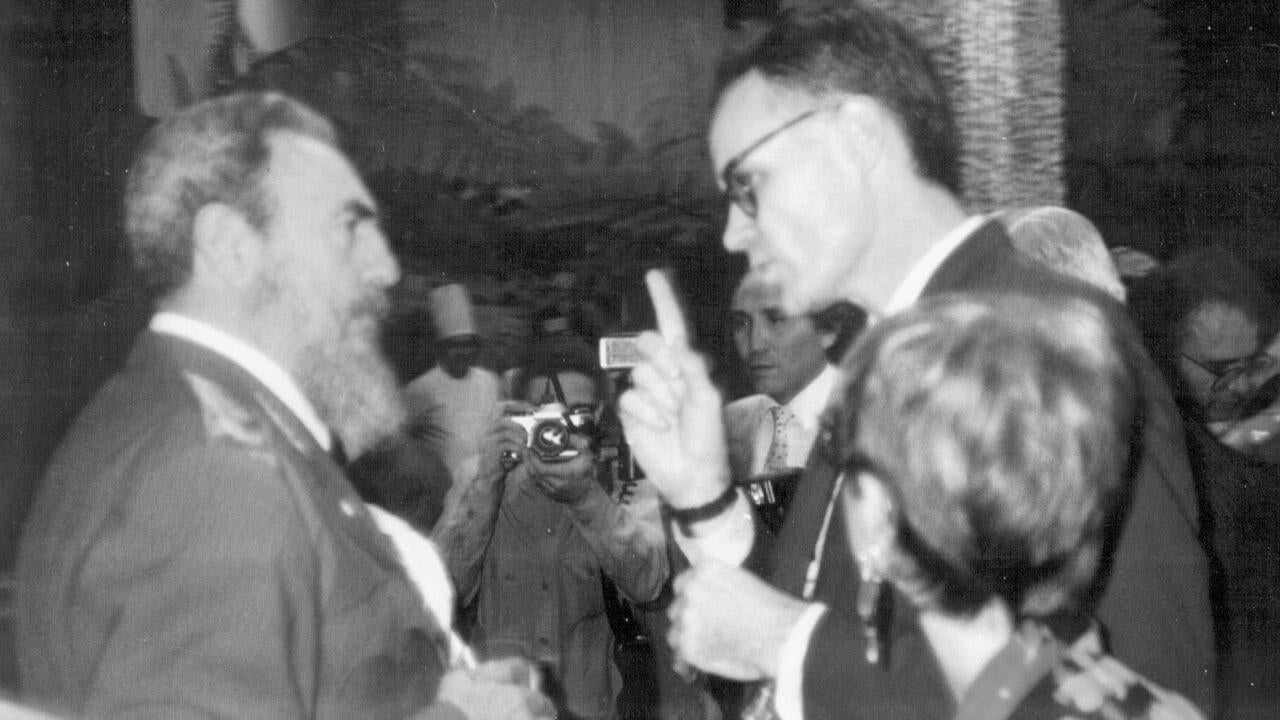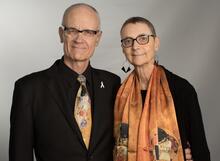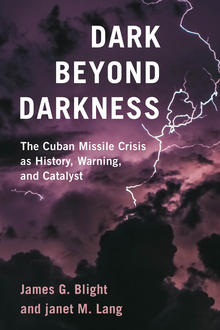
We need to understand how the world hinged on Cuba in 1962
University of Waterloo scholars challenge millennials to abolish nuclear weapons

University of Waterloo scholars challenge millennials to abolish nuclear weapons
By Wendy Philpott Faculty of ArtsIn 1992, on the 30th anniversary of the Cuban missile crisis, historians Jim Blight and janet Lang organized a remarkable meeting in Havana between Fidel Castro, Robert McNamara, and former aides of Nikita Khrushchev. The group represented the key living players in the most dangerous military confrontation in history—a crisis that, the meeting revealed, avoided nuclear Armageddon at the last minute.
 Partners in life as well as scholarship (they have been married for 41 years), Professors Blight and Lang are leading experts on the crisis. They have convened five international conferences, produced numerous animated films and documentaries, and published six previous books on the subject. Their new publication Dark Beyond Darkness: The Cuban Missile Crisis as History, Warning and Catalyst makes it seven books.
Partners in life as well as scholarship (they have been married for 41 years), Professors Blight and Lang are leading experts on the crisis. They have convened five international conferences, produced numerous animated films and documentaries, and published six previous books on the subject. Their new publication Dark Beyond Darkness: The Cuban Missile Crisis as History, Warning and Catalyst makes it seven books.
“We find that most people still don’t understand the Cuban missile crisis,” said Lang, “but we find that once you do, once you get its danger, its fear, its closeness to Armageddon—then it becomes a very strong argument for nuclear abolition. And the necessity of abolishing nukes is the point we underscore in Dark Beyond Darkness.”
 The new book draws on historical facts and human foibles the researchers have uncovered that they hope will galvanize readers – especially young readers – to become fully cognizant of how dangerous our world was then, and is today with 15,000 nuclear warheads currently poised, and volatile leaders with their proverbial fingers on the button.
The new book draws on historical facts and human foibles the researchers have uncovered that they hope will galvanize readers – especially young readers – to become fully cognizant of how dangerous our world was then, and is today with 15,000 nuclear warheads currently poised, and volatile leaders with their proverbial fingers on the button.
“This is an attempt to speak to the millennial generation, because even the best and the brightest among the millennials don’t seem to care about this issue. It’s just not real to them; it seems too abstract,” said Blight. “Our challenge is to reach them in two ways: first, to be afraid of what might happen; second, to act productively in ways that lead toward nuclear abolition.”
 In their academic capacities, the couple spent years building relationships and trust with key players of the Cuban missile crisis, persuading them to meet with their former enemies to examine one another’s actions in the light of history—part of a research method they pioneered called “critical oral history.”
In their academic capacities, the couple spent years building relationships and trust with key players of the Cuban missile crisis, persuading them to meet with their former enemies to examine one another’s actions in the light of history—part of a research method they pioneered called “critical oral history.”
“There is something almost magical about sitting down with your former enemy years later, presenting what you believed they were about to do at the time, only to discover that you were totally wrong,” commented Lang.
To move toward nuclear disarmament, Blight suggested that “you’ve got to show how the world could be blown up if we don’t abolish the nukes, and the Cuban missile crisis makes this case in spades,” emphasizing that Fidel Castro’s Cuba shares important characteristics with small, but combative, nuclear powers like Kim Jong Un’s North Korea or Benjamin Netanyahu’s Israel.
“If war breaks out in any of these volatile regions, and the war goes nuclear, the entire world will be at risk due to the nuclear winter that would follow. In such a scenario, the living could very well envy the dead,” said Blight. “We hope to see young people stir things up and keep us focused on what is perhaps our most important task as human beings: destroy nuclear weapons before they destroy us.”
Dark Beyond Darkness is available at a 35% discount to UWaterloo faculty, staff, and students via the Rowman & Littlefield Publishers site, using discount code 4S18DBD35. The book is also available from the University of Waterloo Bookstore.

Read more
Dr. Naila Keleta-Mae discusses her latest album and what it means for her to create music rooted in Black traditions of activism and imagination

Read more
Discover how Waterloo alumni are driving Canada’s economy with five tech companies making a local and global impact

Read more
Waterloo researchers are decoding new technologies by asking why they were made and who they are made (or not made) for
The University of Waterloo acknowledges that much of our work takes place on the traditional territory of the Neutral, Anishinaabeg, and Haudenosaunee peoples. Our main campus is situated on the Haldimand Tract, the land granted to the Six Nations that includes six miles on each side of the Grand River. Our active work toward reconciliation takes place across our campuses through research, learning, teaching, and community building, and is co-ordinated within the Office of Indigenous Relations.